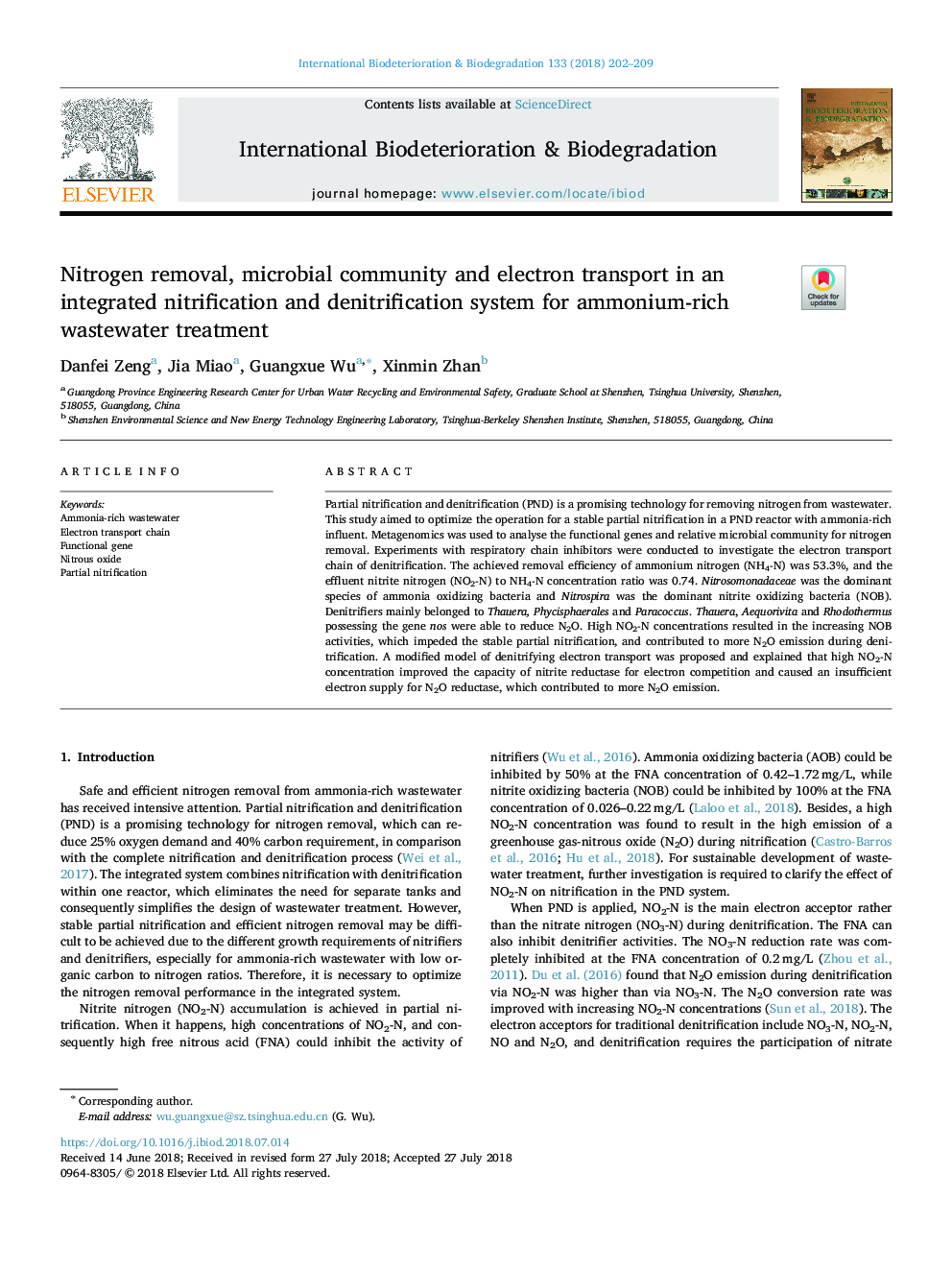| Article ID | Journal | Published Year | Pages | File Type |
|---|---|---|---|---|
| 8843716 | International Biodeterioration & Biodegradation | 2018 | 8 Pages |
Abstract
Partial nitrification and denitrification (PND) is a promising technology for removing nitrogen from wastewater. This study aimed to optimize the operation for a stable partial nitrification in a PND reactor with ammonia-rich influent. Metagenomics was used to analyse the functional genes and relative microbial community for nitrogen removal. Experiments with respiratory chain inhibitors were conducted to investigate the electron transport chain of denitrification. The achieved removal efficiency of ammonium nitrogen (NH4-N) was 53.3%, and the effluent nitrite nitrogen (NO2-N) to NH4-N concentration ratio was 0.74. Nitrosomonadaceae was the dominant species of ammonia oxidizing bacteria and Nitrospira was the dominant nitrite oxidizing bacteria (NOB). Denitrifiers mainly belonged to Thauera, Phycisphaerales and Paracoccus. Thauera, Aequorivita and Rhodothermus possessing the gene nos were able to reduce N2O. High NO2-N concentrations resulted in the increasing NOB activities, which impeded the stable partial nitrification, and contributed to more N2O emission during denitrification. A modified model of denitrifying electron transport was proposed and explained that high NO2-N concentration improved the capacity of nitrite reductase for electron competition and caused an insufficient electron supply for N2O reductase, which contributed to more N2O emission.
Related Topics
Life Sciences
Environmental Science
Environmental Science (General)
Authors
Danfei Zeng, Jia Miao, Guangxue Wu, Xinmin Zhan,
